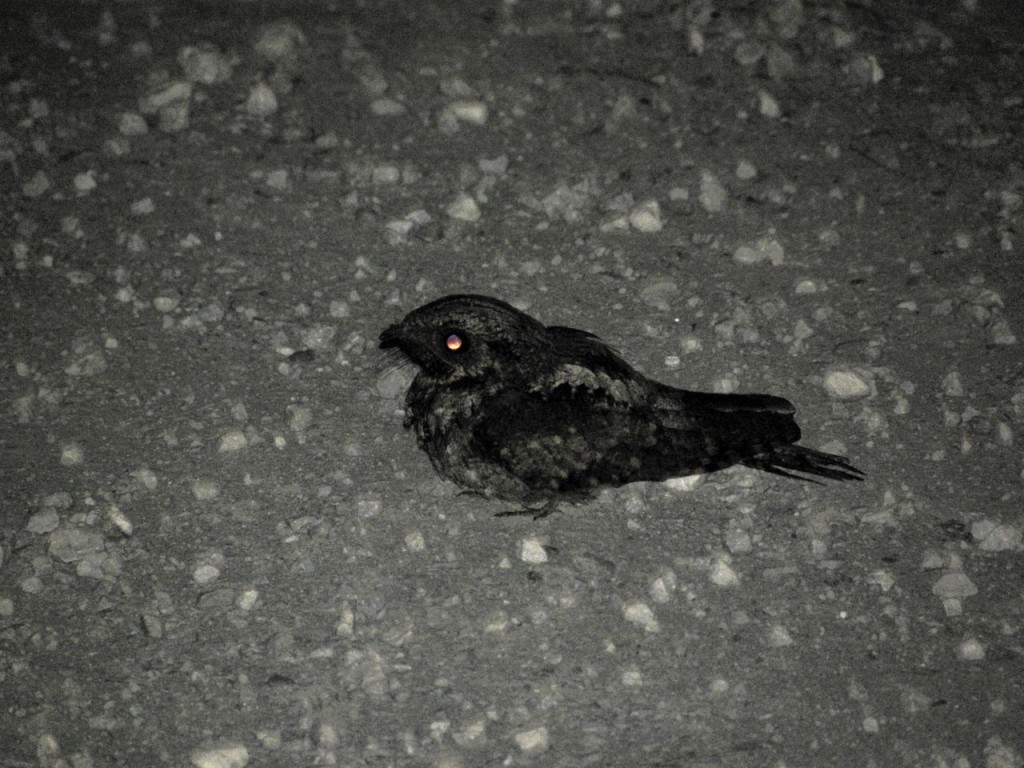19 May 2013. Dyers Bay ON. My last full day at the Bruce Peninsula Bird Observatory was indeed full, in many respects. The day’s banding efforts exceeded all and anyone’s wildest expectations. An overnight change in the weather had brought southerly winds and a massive influx of migrants; it was so busy that we had to close the nets early to avoid becoming overwhelmed with Magnolia Warblers, Black-throated Blue Warblers, American Redstarts, Philladelphia Vireos and Northern Parulas to mention but a few. And that was just the daylight hours – there was more to come.
I treated my young companions to an evening out; such as it is in a rural backwater. We drove 40 minutes to Lion’s Head, a small town with a pub, and toasted the day’s successes. One of the conditions of my buying dinner was that, on the return journey, we’d stop at a couple of marshes to listen for Least Bitterns. No-one objected; why would they? Our first roadside stop produced the expected din of Spring Peepers and American Toads while in the distance, the dreamy song of a Wood Thrush, the buzzy calls of a Common Nighthawk and overhead the twittering of Wilson’s Snipe display flights made the stop more than satisfying even without Least Bitterns.
Continuing our journey home, the last twenty minutes of the approach to the bird observatory are along a gravel road that demands, and rewards, slow driving. To the right is the narrow rocky beach and open waters of Georgian Bay and to the left a dense Eastern White Cedar and White Birch forest. It was dark as we drove that final stretch and we noticed countless small birds flying from right to left, from the lake and shoreline to the safety and cover of the forest. We debated whether they were new and arriving inbound migrants or were they surprised forest birds feeding along the road’s edge and the shoreline.
Turning a corner the car’s headlights caught the orange reflection of eyes on the road ahead. I knew right away that we were approaching a Whip-poor Will, so we slowed down to a walking pace until we were within a car’s length or two or the bird crouching on the road surface, unmoving. One of our group exited the car to get a closer look and perhaps inevitably the bird flew off. So we continued our journey and again the same thing happened: distant eye-shine leading to a slow and close approach. We stopped and admired this new bird, which every now and then flew up a twisting arc, presumably to catch a bite to eat, then settled back on the gravel road again. I had to try for a photograph and amazingly was able to walk slowly and softly enough to get within range for the photo below. Whip-poor Will – unquestionably Bird of the Day even with the excitement of the morning.
